|
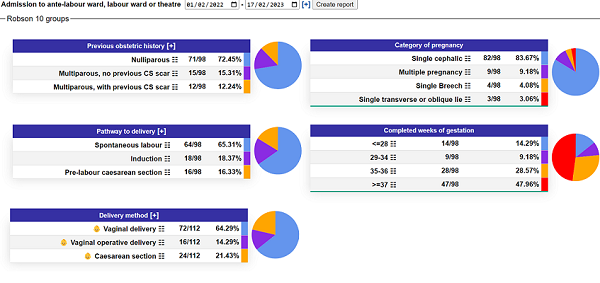 | See your population mix and outcomes at a glance. Note that these examples are based on unrealistic test data. |
 | See the Robson 10 group data. By clicking on the [+] symbol, you can drill in to see the report based on that criteria. By clicking on the ☷ symbol, you can produce a list of matching cases for you to review. |
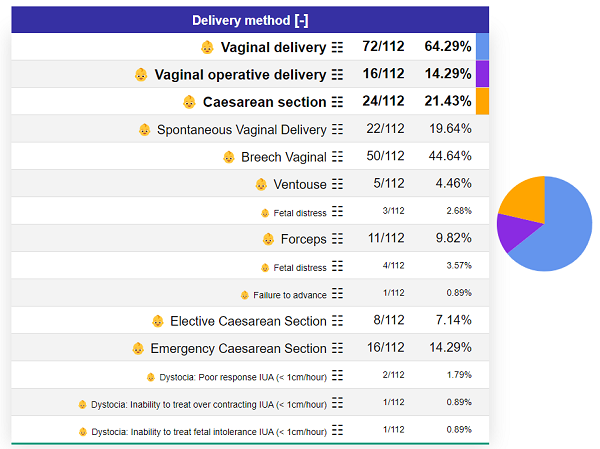 | You can drill into all manner of criteria. Here we have drilled into the indication for the birth outcomes. |
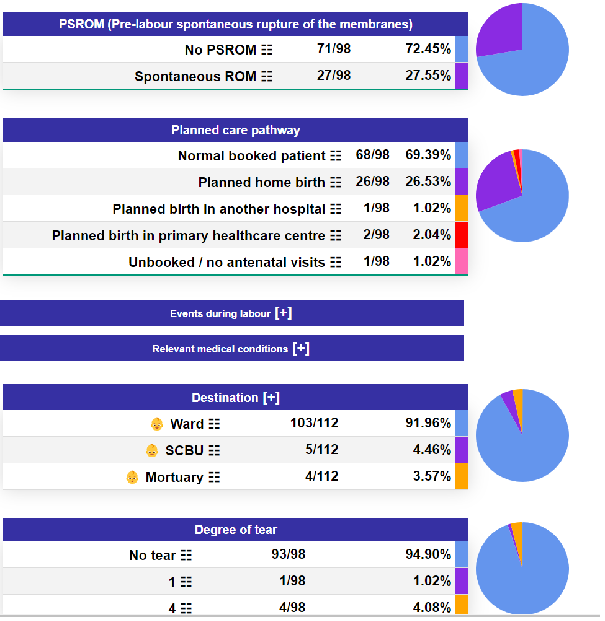 | Some more reporting criteria.... You can further drill into events that occured during labour, outstanding medical conditions etc etc. |
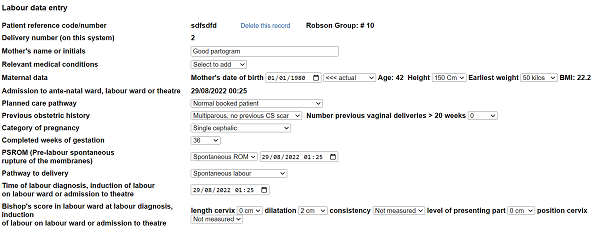 | Hospitals can enter data to fully examine what happens during labour. This includes 'prospective data' about the mother, events during labour and birth outcomes. |
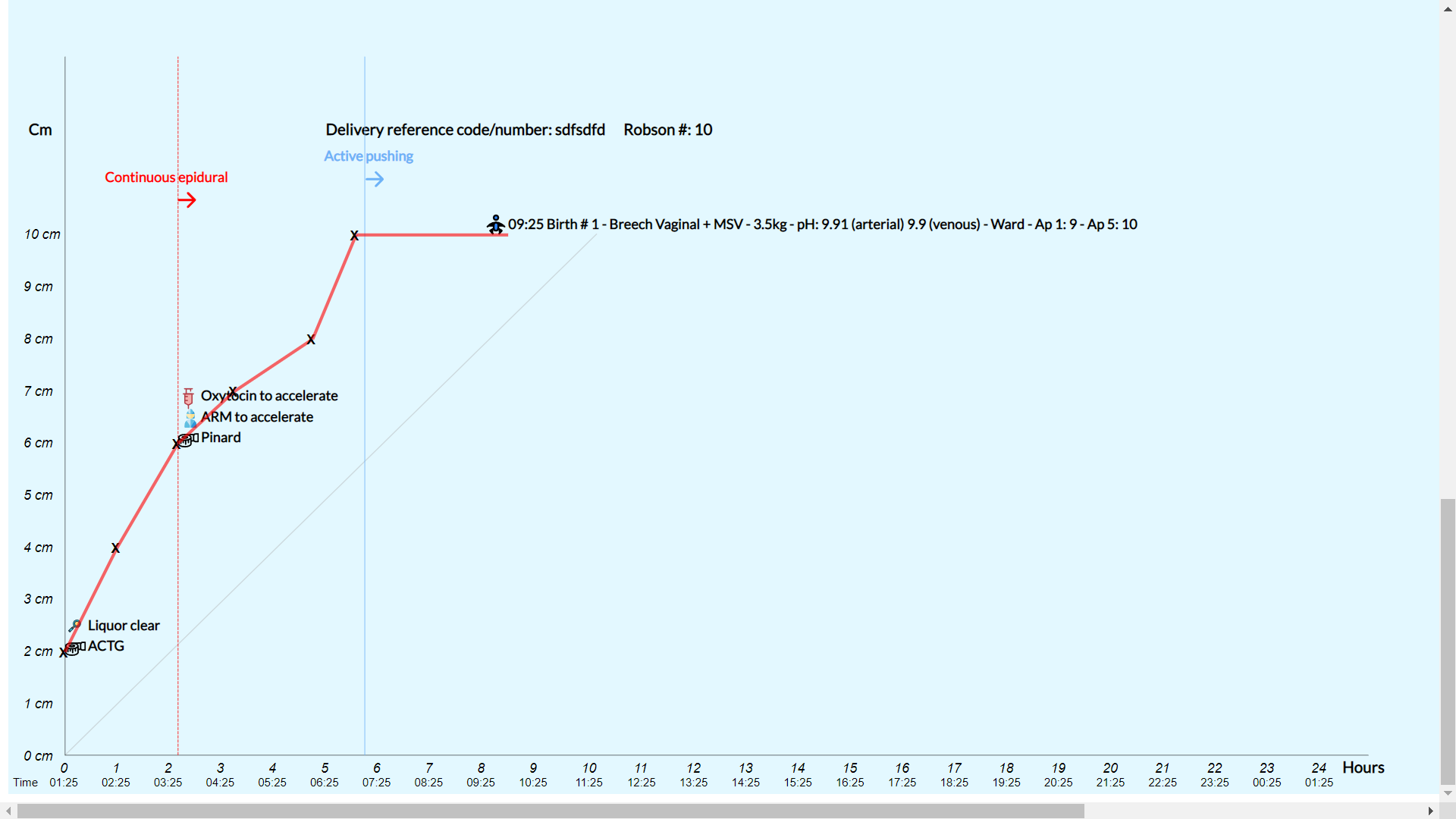 | A partogram gives a visual display of the progress of the labour. Partograms are a useful tool for reviewing cases. |